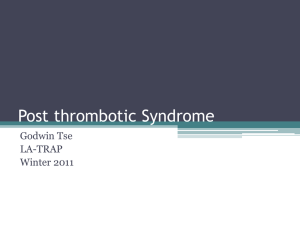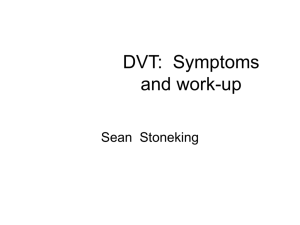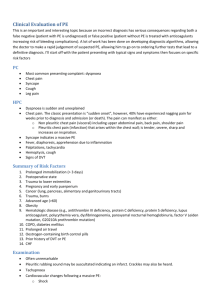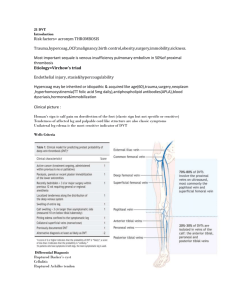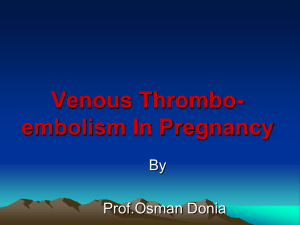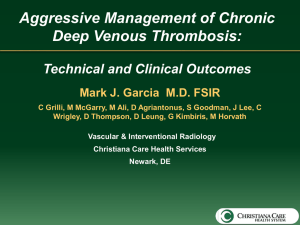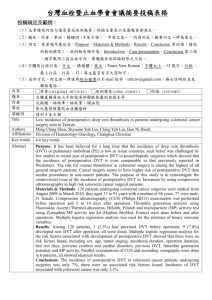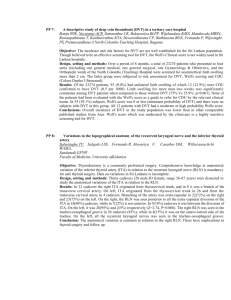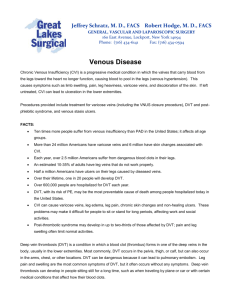Nationalizing Pulmonary Embolism Support Groups
advertisement
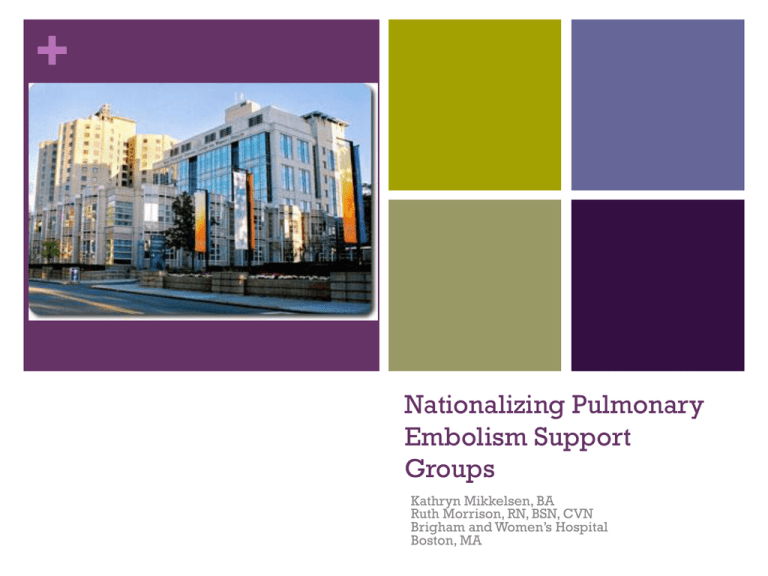
+ Nationalizing Pulmonary Embolism Support Groups Kathryn Mikkelsen, BA Ruth Morrison, RN, BSN, CVN Brigham and Women’s Hospital Boston, MA + BACKGROUND The incidence of DVT and/or PE is 1-2 per 1,000 adults per year in the Unites States alone. The U.S. Surgeon General estimates that there are 100,000-180,000 fatal PE cases annually. Survivors of DVT or PE may suffer from physical as well as emotional challenges. More people die each year from complications of DVT then AIDS, breast cancer, and car accidents combined. + PHYSICAL LIMITATIONS Chronic venous insufficiency or post thrombotic syndrome Pain, swelling, tenderness Shortness of Breath Pulmonary Chest Pain Hypertension + EMOTIONAL CHALLENGES Stress Anxiety Depression Panic Fear attacks of the unknown Financial hardship + HISTORY OF BWH PE/DVT SUPPORT GROUP Started 18 years ago by Dr. Samuel Z. Goldhaber and Ruth Morrison, RN Over 160 members Meets once every 4-6 weeks + A typical meeting… Starts promptly at 7:00 pm, adjourns at 8:15 pm Members introduce themselves & share their story (only if they feel comfortable) Guest speaker (physical therapist, pharmacist, nutritionist) Q&A session + ABOUT OUR MEMBERS Average age is 59 Majority have experienced only 1 PE and/or DVT Majority experienced their first PE/DVT over 5 years ago The most common emotional side effects they mention are anxiety and frustration + What our PE Support Group Members had to Say… “Learning about the disease and that others have the same problems. That there is help and support close by.” “Information. For instance, I learned about home testing and now do that instead of going to the doctor's office.” “Knowing that life goes on pretty much as before for the vast majority of patients with only minimal daily inconveniences.” “I like hearing about the current status of research in this area.” “It was extremely beneficial for me to hear that others had similar fears that I had. Just being able to express + BENEFITS OF SUPPORT GROUPS Allow Help patients to share their experiences. one another cope with the challenges they face. Increase knowledge, increase confidence, gain support. Learn up-to-date and accurate information. + OBJECTIVE To promote the formation of multiple viable pulmonary embolism (PE) Support Groups across the United States and Canada. These groups will focus on the unmet educational needs of patients diagnosed with deep vein thrombosis (DVT) or PE and their families. The Support Groups will foster patient education, awareness and advocacy. + Goals •Educate Healthcare Providers (HCPs) on communication skills that allow them to better counsel and educate patients in a support group setting. •Develop a PE Support Group blog which will allow participating hospitals and support group members from around the United States and Canada to connect. •Develop and employ a five-phase evaluation instrument that measures patient participation, learning, and whether psychological needs have been understood and met. •Publish a document on how to successfully create and maintain a support group. + EDUCATIONAL TOOLS Facilitators Pamphlets Guide to promote Support Group to Patients Blog on the NATF website where HCPs and patients can connect Monthly newsletter Teleconference with other hospitals starting PE Support Groups Access to Dr. Goldhaber and Ruth who have run a successful support group for 18 years + Time Commitment to Start/Maintain a PE Support Group MD: 1 hour per 4-6 weeks to attend meetings, in addition to recruiting patients. Nurses: 1 hour per 4-6 weeks to attend meetings, in addition to recruiting patients. Administrative Support: 1 hour per 4-6 weeks to attend meetings, 1 hour per 4-6 weeks to reserve meeting space, send out electronic invitations using eVite and book guest speaker (if applicable.) + So, how are we doing? •7 individuals in Canada •22 through out the US •First meeting scheduled to begin May 2011 + Questions?
